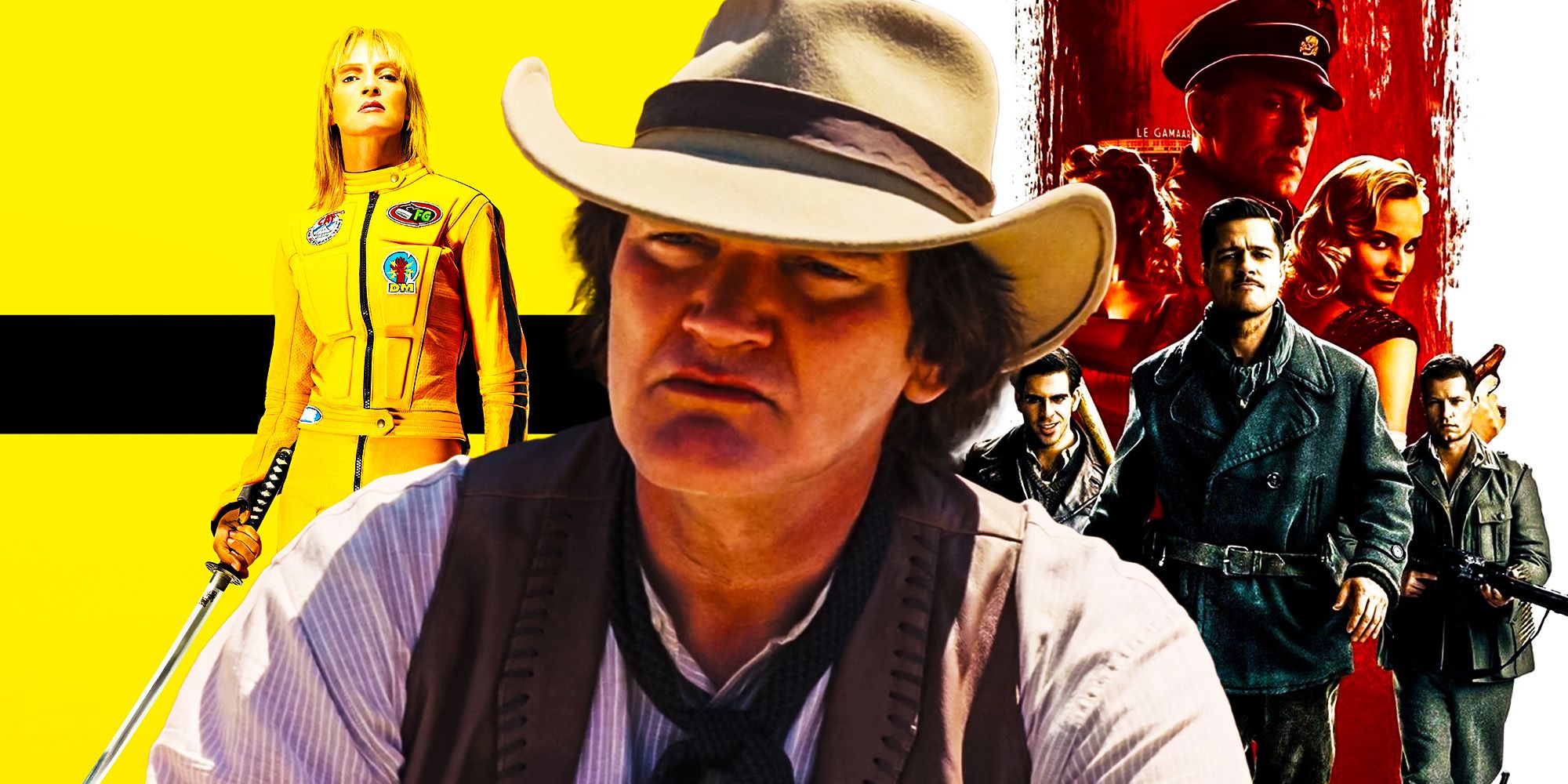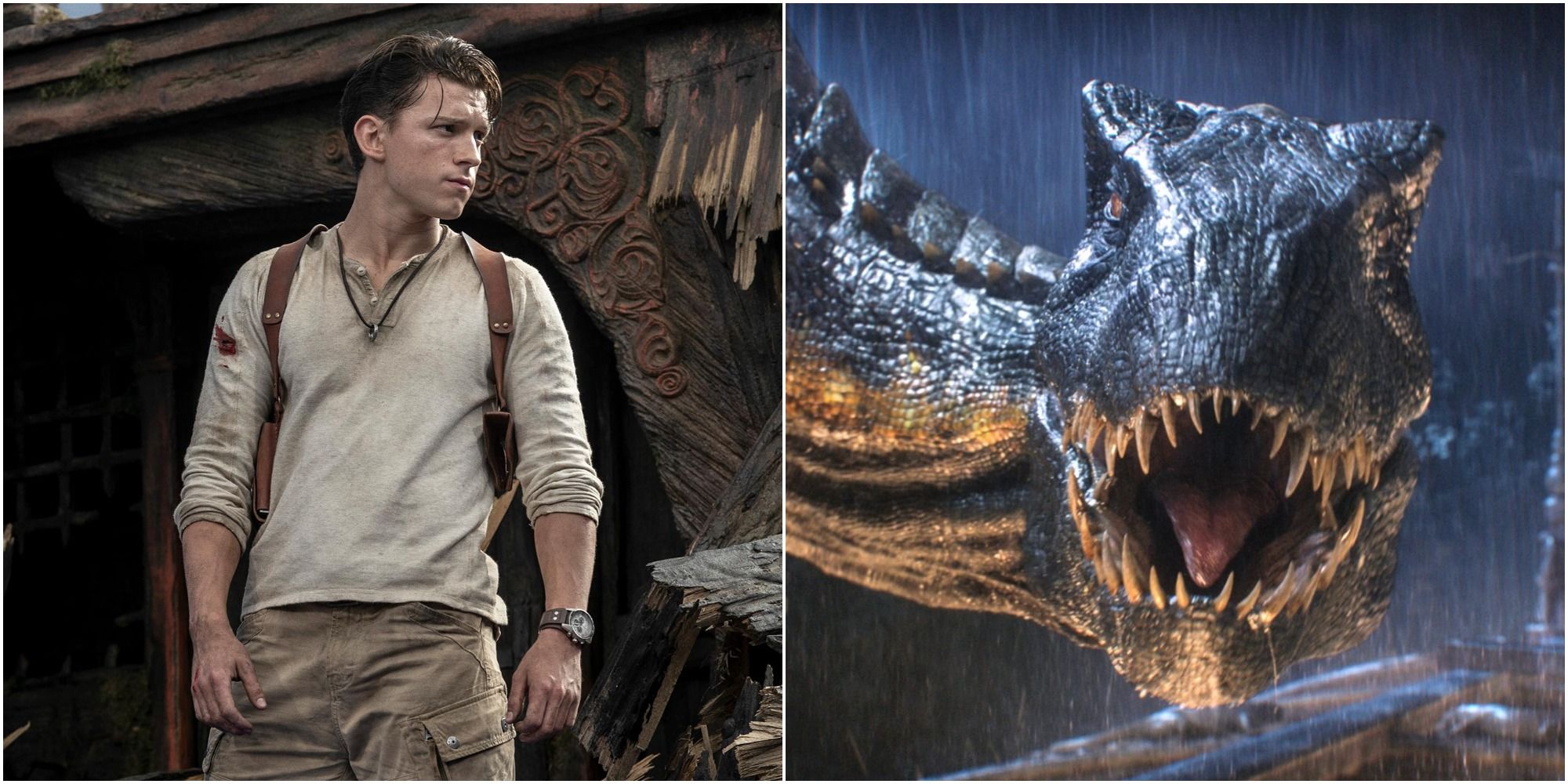Quentin Tarantino is one of the most influential filmmakers in the industry, and he gave way to the “Tarantino Effect,” which has two definitions depending on the context. Tarantino has won praise and respect from audiences and critics alike with his signature visual and narrative style, although he and his works have also been shrouded in controversy, primarily due to the heavy doses of violence in each of his films.
Quentin Tarantino’s filmmaking career began in 1992 with the detective film reservoir dogswhich was a critical success and became a classic of independent cinema, but its big breakthrough came two years later with pulp Fiction, another detective film that has the distinction of being told in a non-linear style. Since then, Tarantino has explored different genres in his films – from martial arts with Kill Bill slash with Proof of death and even alternate versions of historical events with Inglourious Basterds and Once upon a time in Hollywood – which, along with its mastery of dialogue writing, unmistakable visual style and consistent quality, has made it an audience favourite.
As a result, Tarantino has also become one of the most influential filmmakers in modern cinema, inspiring others and also changing the way stories are told and Hollywood films in general. This gave way to the concept of the “Tarantino Effect”, which has two different meanings depending on the context – and here’s what the “Tarantino Effect” is and how it changed Hollywood.
The Tarantino effect in his own films
As mentioned above, the works of Quentin Tarantino stood out for their very particular narrative and visual style, and although they were the key to his popularity and success, they also aroused much criticism and controversy. Tarantino’s films feature graphic violence, and most of his films have been banned in different countries for this reason, but he has defended his use of blood and violent scenes on different occasions. One of the most defining elements of most of Tarantino’s films is the use of non-linear structure, especially in pulp Fictionwhere the segments are presented out of order, although he also used it more subtly in films like reservoir dogs and The Hateful Eight by intercutting scenes from the past with present actions. This shifting timeline has been called by critics the “Tarantino effect”.
Other elements that add to the “Tarantino effect” are the addition of numerous pop culture references, the creation of his own products and brands that appear in nearly every film he directs, Mexican Standoff, an incredible amount of close-up foot shots, chest shots, cameos from Tarantino himself, and a dark sense of humor. “The Tarantino Effect” has influenced many other filmmakers over the years, but there is also another definition of the term that has nothing to do with a film’s narrative and visual style and more to do with the evolution works by Tarantino.
The Tarantino Effect in Hollywood
As mentioned above, Tarantino’s career started with reservoir dogsa much smaller film than later projects like Once upon a time in Hollywoodand although Tarantino’s works have a consistent quality and all have his trademark style, the “Tarantino effect” also refers to the transition from low-budget films to Hollywood hits. reservoir dogs was made on a shoestring budget, and Harvey Keitel played a key role in bringing the film to life, signing on as co-producer so Tarantino and producer Lawrence Bender could find the financing they needed much more easily. reservoir dogs was made on a budget of $1.2 million, becoming one of the biggest independent films of all time.
The success of reservoir dogs opened many doors for Tarantino and funded his next film, pulp Fictionwas easier, getting an $8 million budget. pulp Fiction was Tarantino’s first major commercial success, earning an estimated $213 million worldwide and marking the beginning of Tarantino’s transition into Hollywood films, although it was still a gradual change. Tarantino’s biggest budget production to date is Django Unchained with $100 million and it’s also his highest-grossing film, but his biggest critical success since. pulp Fiction is Once upon a time in Hollywood. Tarantino’s transition from low-budget films to Hollywood films was also reflected in the casting of his films, as he had the opportunity to work with some of the most popular actors in the industry, such as Robert De Niro , Brad Pitt and Leonardo DiCaprio. , and even though he made this big change, the quality and style of his films has been consistent – basically, “The Tarantino Effect” hasn’t been affected too much by the “Tarantino Effect”.
How the Tarantino Effect Influenced Hollywood Movies
The “Tarantino Effect” has influenced Hollywood films both in terms of storytelling and the impact of independent cinema in Hollywood. Various directors have been influenced by the works of Tarantino and his style, mostly through the shifting timelines, stylized violence, homage flicks in their films, and the addition of a bunch of pop culture references that are part of the story rather than just being Easter eggs for the audience. Some examples of Tarantino’s influence in Hollywood films in terms of narrative and visual style (and intentional or not) are Christopher Nolan Memento and Michel Gondry Eternal sunshine of the spotless mindwhich used a nonlinear structure, and that of Joe Carnahan Smokin’ Ace violence was heavily influenced by Tarantino films, while others were more subtle in how the “Tarantino effect” influenced their works. Of course, many filmmakers have also gone through the “Tarantino effect” and transitioned from low-budget films to Hollywood films, though these transitions aren’t always as smooth as Tarantino’s.
Does the Tarantino effect still apply to modern films?
The influence of the “Tarantino Effect” in terms of visual and narrative style will surely continue for many years to come given its impact on cinematic history, but in terms of the transition from low budget to Hollywood hits , filmmakers might not go through the “Tarantino Effect” as easily as others have in the past. The film industry is currently dominated by franchises from some of the biggest studios, such as Disney’s Marvel Cinematic Universe and Warner Bros. DC Extended Universe, which also has strong marketing campaigns that ultimately grab audiences’ attention, making it harder for smaller productions to find an audience. on low budget projects can’t have their big Hollywood break like Quentin Tarantino done, but the competition is much tougher now, and the “Tarantino effect” doesn’t happen as easily and often as it used to.
About the Author


